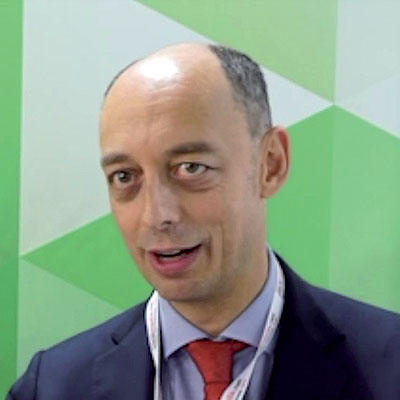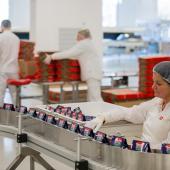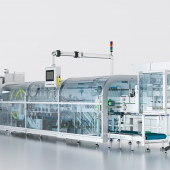Environmental labeling: responses from the institutions ar e urgently needed
We receive and gladly publish the considerations of the newly elected President of Giflex, Alberto Palaveri (CEO of Sacchital) about the new “criteria informing the activity of packaging waste management” reported in the DL of last September 3.

Alberto Palaveri
We are living difficult months. Many of the certainties that have long accompanied us are in doubt, and many of the habits that have marked our lives will change forever.
Despite this phase of uncertainty, those who work in the packaging world know that the scenarios of the future are not so different from what was imagined and experienced before the COVID-19.
Certainly the changes in some habits will impact on food consumption and, consequently, on the pack: smart working and e-commerce, for example, are important drivers both for innovation and for a different distribution of packaging.
A more urgent issue, however, concerns the complete revision of packaging guided by words such as “sustainability” and “circular economy”. For some years now, packaging designers and manufacturers, during business meetings, have had to answer questions of this kind: “what is the right packaging for my product?”, “can it be recyclable-compostable?”, “and what will the end customer think?”.
Companies in the sector and the entire supply chain, driven by these questions, invest in the search for new and competitive solutions. However, the need to respond positively to consumer demands, the need to contain costs and the presence of old packaging plants unsuitable for new materials, make the challenge of sustainability difficult and expensive.
In an already difficult context, therefore, the institutions add new complexity: increasingly differentiated and expensive Conai tariffs, a plastic tax conceived as an excise duty and not as a model to encourage the transition, and a European tax on plastics whose harmonization with the Italian one is still unclear.
Finally, with the transposition of the “Waste and Packaging Directive” (Legislative Decree no. 116 of September 3, 2020), the obligation of labeling without clear application indications was introduced from September 26, 2020. This is an issue on which both Confindustria and the various industry associations, including Giflex, have expressed their opinion asking the legislator for an extension that is still, after repeated comparisons, late to arrive, generating confusion and uncertainty in the entire supply chain.
Although the obligation to declare the material of which a package is composed is fair and reasonable, it is surprising that it was imposed without an intense discussion with market players.
It is a matter of planning a complex evolution in the packaging sector on which collaboration between institutions and companies is essential.
It is amazing to find ourselves operating with an existing obligation without knowing how to comply with it. Even more surprising is the lack of response from the institutions, which we have been waiting for since the beginning of September.
In our world of flexible packaging it will be fundamental to use labeling to relaunch some shared principles: the material that pays the fee of one of the consortia must be collected in a differentiated way, so as to keep the quota of waste from flexible packaging that goes into the undifferentiated to zero.
The effort to respond positively to standards that guide recyclability and compostability must be enhanced. And, finally, that there is a positive attention to choices of both new materials and innovative technological solutions, aimed at the best valorisation of packaging at the end of its life.
Conai has tried to respond to the complexity of the challenge by designing a tool to “build an environmental label that complies with existing regulatory references” but it is not enough. Although it is the only tool that tries to put some order, it is a starting point, not a point of arrival.
The choice to communicate to your customers the material of which a packaging is composed is too important to be solved by a tool and simplistic rules that look to the past. The availability of the sector is maximum. But we are waiting for a resolutive comparison with the institutions, in order to take advantage of the possibility to make our industry more and more sustainable.
Alberto Palaveri
President Giflex (Italian Flexible Packaging Association)

Source: CONAI
An excerpt of D.L. September 3,
2020, n. 116
On September 11, 2020, Legislative Decree no. 116 of September 3, 2020, which transposes EU Directive 2018/851 on waste and EU Directive 2018/852 on packaging and packaging waste, was published in the Official Journal.
Art. 3, paragraph 3, letter c) of the Decree has made changes to paragraph 5 of Art. 219 of the Environmental Code, on the subject of “Criteria informing the management of packaging waste”.
Specifically, this amendment requires that all packaging be “appropriately labeled according to the modalities established by the applicable UNI technical standards and in compliance with the determinations adopted by the Commission of the European Union, in order to facilitate the collection, reuse, recovery and recycling of packaging, as well as to provide consumers with correct information on the final destination of packaging. Producers are also obliged to indicate, for the identification and classification of packaging, the nature of the packaging materials used, based on Commission Decision 97/129/EC”.



















